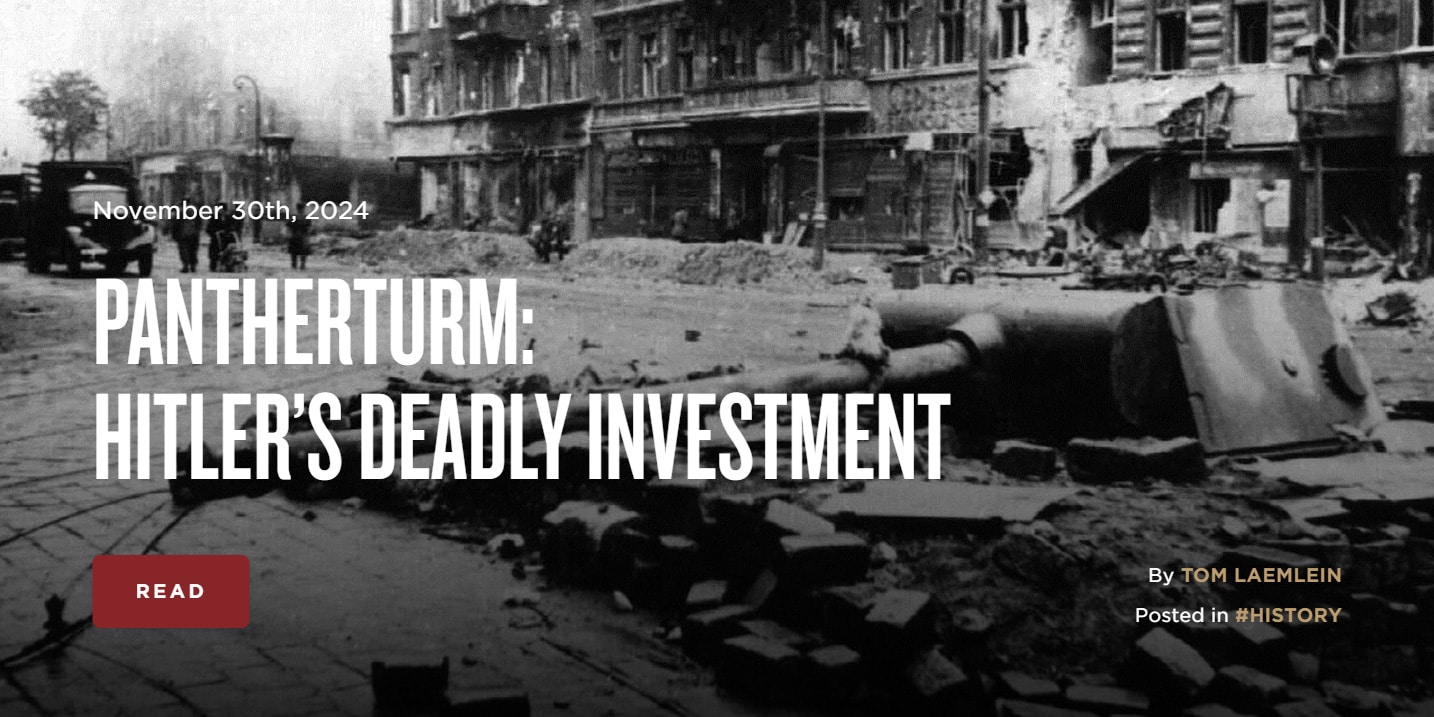Hello all, here is today's article posted on TheArmoryLife.com. It is titled “Pantherturm: Hitler’s Deadly Investment” and can be found at https://www.thearmorylife.com/pantherturm-hitlers-deadly-investment/.



As per @Cedric comments the Panther had plenty of problems "under-the-hood".I'd argue that the Panther was the finest tank of the war. It had even more maintenance problems than the Tiger. Their debut at Kursk was less than stellar with 6 having destroyed themselves by fire while road marching from the rail head. Out of 202 sent to battle 80 went down for mechanical failure alone. With final drive problems, poor suspension design which led to jammed road wheels in muddy weather it's no surprise they ended up as immobile forts. Later Panthers had solved some of these problems but not all. At best they had a 50+ percent readiness rate. In my day the commander would have been fired.

 tanks-encyclopedia.com
tanks-encyclopedia.com

 tanks-encyclopedia.com
tanks-encyclopedia.com
The King Tiger and the Elefant/Ferdinand didn't use the same gun. They and the Jagdpanther used the "other" 88, the 88L70, which was not the same as on the Tiger I. That was the flak gun 88L56 modified for the Tiger I.
Correction L71.The King Tiger and the Elefant/Ferdinand didn't use the same gun. They and the Jagdpanther used the "other" 88, the 88L70, which was not the same as on the Tiger I. That was the flak gun 88L56 modified for the Tiger I.
Tank destroyers are primarily defensive weapons. Generally, any force will pay a price going on the offense but there are exceptions. Incremental development comment is correct, but it was hard for the Germans to do that when Hitler stuck his nose into every design and production decision, and builders jostling for a piece of the pie. The Panther was a good example. Armored fighting vehicles need a balance of armor, firepower and mobility for their expected role. Hitler intervened and wanted more armor up front. This meant the side armor of the initial models were even slightly thinner than a Sherman's. I'll say it again, no tank is invincible. Crew training, leadership is key.It was also the basis for the best tank destroyer of the war, the Jagdpanther.
If the German Army had done what we did, incremental development, concentrating on developing mechanical reliability, the Allies would've truly been a world of hurt.
As it was, we still paid a crazy high price in their defeat.
The Elephant and Ferdinand were tank destroyers. At Kursk, the Early Ferdinands were used offensively and for some reason did not have secondary machine gun armament. This led to cases of Soviet infantry swarming and overcoming these vehicles.@Cedric Heard the king tiger (the elephant) was a good tank for the war. Comments?
Variations on the ** theme, like the US M68 105mm was a variant of the Brit RO L7 which spawned etc, etc.The King Tiger and the Elefant/Ferdinand didn't use the same gun. They and the Jagdpanther used the "other" 88, the 88L70, which was not the same as on the Tiger I. That was the flak gun 88L56 modified for the Tiger I.
The French put quite a few Panthers into service post war.
They also developed its 75mm gun further. Said gun was the primary armament of the Israeli M50 Super Sherman.

Except the M68 and L7 were the same gun. The 88L71 was longer the the 88L56 and was developed to counter KV's and IS series of tanks.Variations on the ** theme, like the US M68 105mm was a variant of the Brit RO L7 which spawned etc, etc.
Yes, while the M68 and L7 are both 105mm tank cannons, the M68 is essentially the American version of the British L7, meaning there are slight design differences between the two, including variations in the recoil system (example below), breech block mechanism, and barrel details, making the M68 a distinct variant of the L7 cannon.Except the M68 and L7 were the same gun. The 88L71 was longer the the 88L56 and was developed to counter KV's and IS series of tanks.
I believe the point Cedric is trying to make is that there were two distinct "families" of 88mm in German service. The "original" capacity Flak 18/36/37 as seen on the first gen Tiger. The later 8.8 Flak 43 as installed in the Tiger II, Nashorn, and others is a completely different chambering that is not analogous to the L7/M68 pattern of adoption. The 8.8 43 can best be thought of as the "magnum" version of the earlier chambering.Yes, while the M68 and L7 are both 105mm tank cannons, the M68 is essentially the American version of the British L7, meaning there are slight design differences between the two, including variations in the recoil system (example below), breech block mechanism, and barrel details, making the M68 a distinct variant of the L7 cannon.
The M68 uses a concentric recoil spring instead of a separate buffer and recuperator hydraulic cylinders.
The same general differences exist between the US and German 120mm's. And the newer Leo2's use L55's vs. the M1 Abrams L44's.
Apples & oranges between the WW2 88's and the later 105's and 120's.
